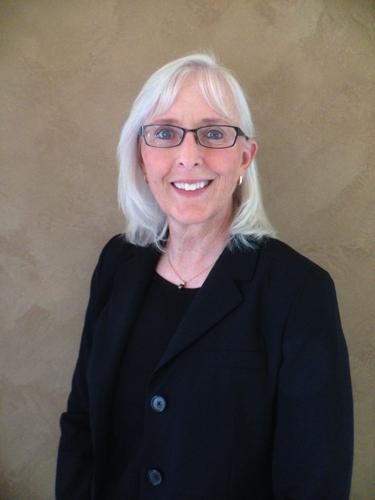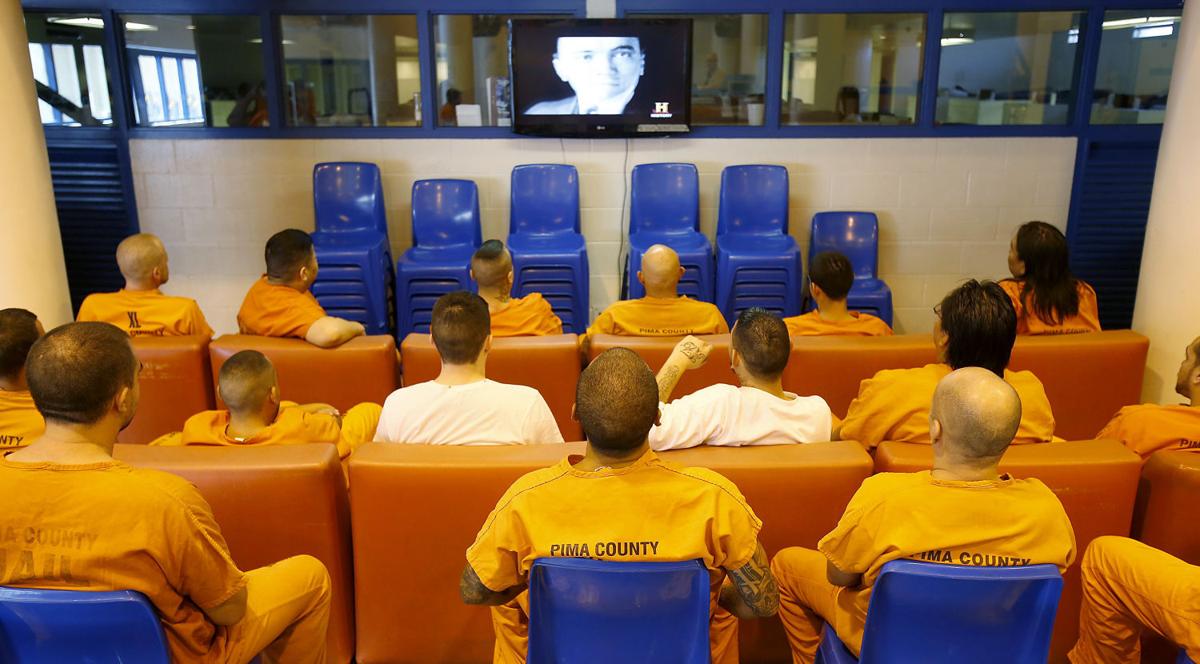Pima County has applied for a grant to avoid jail overcrowding and address some of the factors driving its population.
The county is seeking nearly $3 million in grant funding through the John D. and Catherine T. MacArthur Foundation Safety and Justice Challenge over two years. The grant would help the county increase pretrial screening, expand weekend court sessions to resolve outstanding warrants, improve data collection, add more home monitoring for sentenced offenders and create an automated court-date reminder system for defendants awaiting adjudication.
With average daily inmate counts at 2,000, the Pima County Adult Detention Center routinely teeters on the verge of full capacity. “For classification purposes, this jail is full at 2,100,” said India Davis, Pima County Sheriff’s Department corrections chief.
The grant funds would be used for additional criminal-justice workers and for purchasing the technology needed to implement the changes, with an ultimate goal of reducing the daily jail population by an average of 20 percent over three years.
That could mean about 425 fewer detainees held in jail each day.
Violent and dangerous defendants would not be candidates for release under the programs; rather, they would focus on reducing incarceration rates for certain classes of nonviolent offenders.
Avoiding the fall
One of the main drivers in the jail population is defendants who fail to appear for court dates or mandated pretrial appointments and later have warrants issued for their arrests.
“That’s about half of the jail right now,” Davis said.
County documents show as many as 90 percent of those defendants’ were originally charged with misdemeanors.
“We’re talking about pre-conviction individuals who enjoy the presumption of innocence,” said Lori Lefferts, Pima County Public Defense Services director.
Lefferts said a lengthy jail stay for minor, nonviolent crimes often begins a downward spiral in a defendant’s life.
For instance, a person who cannot pay a bond may be forced to remain in jail until they can get before a judge and be released. That could take days or weeks, and in the interim they could lose their job and apartment, or their children could be taken from them.
And the poor are disproportionately affected.
“If you’re poor, you stay in jail,” Lefferts said. “The vast majority of people sitting in jail do not pose a risk to the community.”
That assessment would not be surprising coming from a career defense attorney, but Lefferts isn’t alone in seeking reforms.
“There’s a need to reduce the population in Pima County jail and eliminate any racial disparities,” said Amelia Cramer, chief deputy for Pima County Attorney Barbara LaWall.
Cramer said many of the people who would be candidates for the proposed programs are drug addicted, mentally ill or both. They are more in need of treatment than incarceration.
“Nonviolent, nondangerous offenders who are sick do not need to be behind bars,” she said. “It can spiral downward for someone pretty quickly.”
But the existing criminal-justice system has few alternatives outside of jail for chronically mentally ill or addicted defendants, Cramer said.
Jail alternatives
The county would use the grant funds to expand the use of GPS ankle monitors that allow jail officials to keep tabs on those serving their time in jail while allowing them to continue to work, attend school or seek treatment without major disruptions to their lives.
The courts already allow qualifying jail inmates to go to their job, requiring only night and weekend stays at the jail.
While the program has been effective in many cases, Davis said it does involve jail manpower. Each time the work-release defendants return, they have to be rebooked.
Davis said defendants trustworthy enough to continue working could be just as easily monitored using the new generation of GPS monitors.
“It’s so precise that we can tell when a guy leaves his house,” Davis said.
The monitors also allow jail officials to communicate with the wearer.
Other monitoring systems require defendants to blow into a remote breathalyzer device before driving.
Davis said the system has biometric technology to ensure the intended person is the one using the device.
The costs of the GPS and other remote-monitoring devices are much less than incarceration — $11 per day versus $85 per day.
Law-enforcement and court-related costs make up the largest part of the county budget, at nearly $270 million per year. Jail costs alone account for more than $48 million each year.
If the grant is awarded, county officials estimate it could translate to a more than $2.7 million reduction in annual jail costs.
Mental health
Another goal of the program would be to increase the pretrial screening process defendants go through.
People facing misdemeanors would be screened for mental-health and substance-abuse issues, and that information would be provided to a judge prior to an initial court appearance.
The judge could then release that person to pretrial services. They then could be provided care and housing if needed through the county’s Regional Health Authority.
“The idea is that a lot of people would get the help that would keep them from cycling back into jail over and over again,” said Ellen Wheeler, assistant Pima County administrator overseeing justice and law enforcement.
Wheeler said providing mental-health treatment for jail inmates poses challenges and could be better offered and at less cost outside the confines of a cell.
Davis said mental-health needs are prevalent among the nearly 35,000 annual bookings at the jail.
“I would say about 60 percent of the people coming through our door have some mental-health issue,” Davis said.
A consensus
It’s not often that all sides of the criminal-justice system stand in agreement on a new approach to punishment, but the program proposed has found a consensus.
“There’s been really strong agreement that people shouldn’t be warehoused in jail because they have mental-health or substance-abuse issues,” Wheeler said.
Along with county administration, the Sheriff’s Department, county attorney, City Court, Justice Court, indigent defense services and pretrial services all have been at the table in the months leading to the application’s completing.
Cramer said the county attorney got on board because the goals speak to the prosecutor’s role in criminal justice.
“The county attorney’s role is to do justice,” Cramer said, adding that justice doesn’t always mean getting convictions and locking people up.
Lefferts said the proposals speak to an emerging philosophy in criminal justice taking root here and in other parts of the country.
“This is a new era,” Lefferts said. “No longer is it considered soft on crime; it’s considered smart on crime.”
Grant recipients are expected to be announced by the end of March.









